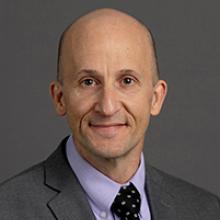What Happens When Educators Get More Feedback? In This Study, Student Math Scores Improved.
A study released today by AIR and the Institute of Education Sciences (IES) shows that even small amounts of the right kind of feedback to teachers and principals can have an effect on student achievement in math. The findings are important for states and districts looking for ways to boost educator effectiveness.
The AIR/IES study used three types of measures to provide the feedback for the teachers:
- Classroom practice: A measure of teacher classroom practice with subsequent feedback sessions conducted four times per year. Each district used one of two classroom observation rubrics offered through the study.
- Student growth: A measure of teacher contributions to student achievement growth (also known as value-added scores) provided to teachers and their principals once per year.
- Principal leadership: A measure of principal leadership with feedback sessions conducted twice a year using survey responses from the principal, principal’s supervisor, and teachers.
AIR researchers worked with eight districts, across five states, to identify 127 elementary and middle schools for the study. All of the educators in these schools continued to receive the performance feedback they had received in the past. For two years, teachers and principals in half the schools from each district received three types of additional feedback on their performance: feedback on classroom practice, student growth, and principal leadership (see sidebar).
The rest did not. AIR assigned the schools to these two groups by lottery, so differences found afterward can be attributed to the additional performance feedback. To assess the impact of the feedback on achievement, researchers compared the two groups using student test scores from state standardized tests administered in the spring of each year.
In the first year, the students in the schools that received the additional feedback outperformed the others in math by the equivalent of four weeks of learning. In the second year, there was a difference of the same size, but it was not statistically significant. There was no difference in student achievement in reading/English language arts. Near the end of the study, AIR collected videotape of the classrooms and found an impact on one of two measures of classroom practice. AIR also found an impact on principal leadership.
Our achievement findings are consistent with those of a recent study in Cincinnati, which found that providing three additional rounds of feedback on a teacher’s classroom practice had an impact on student achievement in math but not reading. An experiment in Chicago found that providing enhanced feedback on classroom practice had an impact on student achievement, but the impact was in reading, not math. It’s not clear why the results differed. These studies used feedback models that varied in some ways, and took place in settings with different local curricula and measures of student achievement, among other dissimilarities.
For states and districts considering a similar approach, it’s important to understand the commitment of resources involved. Although each feedback session took less than an hour, the districts committed significant amounts of time to put the feedback systems into place, gather the performance information, and provide the feedback. (See the chart below for details on the classroom practice and principal leadership measures.)
How much staff time does it take to train, track and give feedback?
|
|
Initial training |
Gathering the performance information and preparing the feedback |
The feedback session |
|
Classroom practice measure |
4–5 days for the observer (principal or experienced teacher) to complete training and demonstrate skill on a certification test 3 hours for the teachers to receive an orientation at the start of each year |
For each teacher, 6 hours for the observer to schedule the observation, observe, write a report, and prepare for the feedback session |
For each teacher, 45 minutes for the observer and teacher to hold the feedback session |
|
Principal leadership measure |
2 hours for the principal to complete training 2 hours for the principal supervisor to complete training 1 hour for the teachers to receive an orientation 1 hour for the teachers to complete training
|
For each principal, 1 hour for the principal and the principal supervisor to complete the survey For each principal, 30 minutes for the teachers to complete the survey For each round of feedback, up to 1 hour for the principal supervisor to complete a training focused on giving feedback |
For each principal, 40 minutes for the principal and principal supervisor to hold the feedback session |
The full report contains additional information about how these feedback systems worked and gives details about the impacts found on classroom practice, principal leadership, and student achievement.
The new AIR/IES study leaves some important questions for further research. First, it would be useful to learn more about how feedback led to improved student achievement. For example, were the effects caused by the educators’ use of the new performance information? Or did they simply reflect the impact of being “watched”? Second, we don’t know whether the impact was driven by one, two, or all three types of feedback given to educators; educators received all three types.
Andrew Wayne is a managing researcher at AIR. His latest project focuses on scaling up a coaching program for in-service teachers that has proven effective in two randomized control trials.
